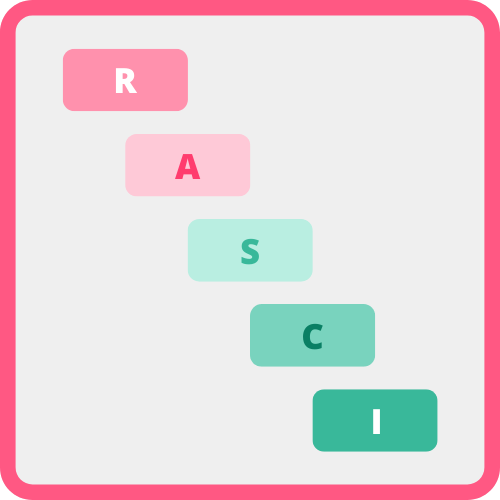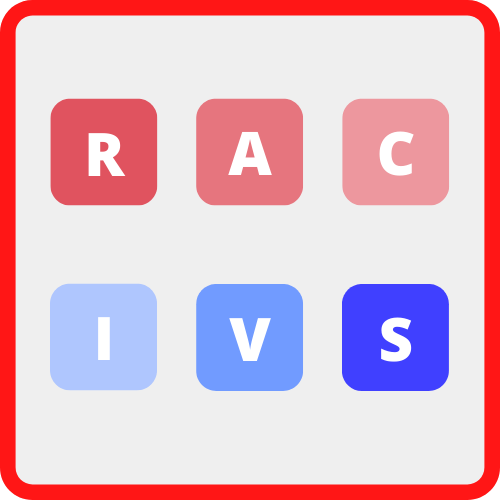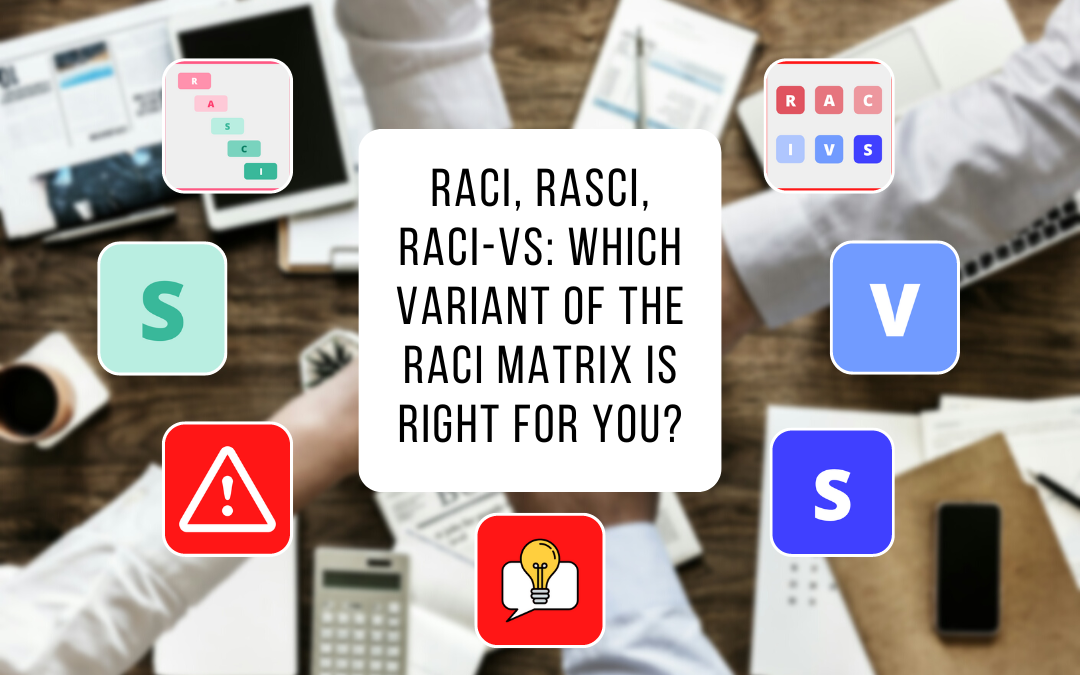The RACI Matrix is a clear and visual method for determining roles and responsibilities and responsibilities, well known in the project management world.
Easy to build, simple to update and perfectly suited to its purpose, it is a tool that can be found in the best practices and methodological references of project management. But did you know that there are more than 10 variations of the RACI matrix?
RACI: a matrix with many variants
Whether they are called PARIS, RASIQ, DACI, CAIRO, RAPID, AQDP etc. The variants and alternatives to the RACI matrix address the same twofold problem: the allocation of responsibilities on the one hand and the sharing of this information among all the members of a project on the other.
In almost all cases, we find the 4 founding responsibilities of the initial method which are :
- R – Responsible (Director),
- A – Accountable (Approver)
- C – Consulted,
- I – Informed
For the sake of precision or adaptation to a particular type of process, variants have been created by adding or substituting one or two other roles.
As the scope and degree of precision is often excessive for most projects, we will focus on the 2 most used variants: RASCI and RACI-VS
RASCI matrix: the Support in more!
What does one more letter add to the RACI matrix?
What does RASCI mean?
- R – Responsible (Director),
- A – Accountable (Approver)
- S – Supported
- C – Consulted,
- I – Informed


Who is the “Support”?
We will not go back over the R.A.C.I. and if you still have questions about these fundamentals, it may be useful to consult the article dedicated to this subject entitled “How to create a RACI matrix“which covers these points in detail.
The particularity of this variant is the “S” for “Supported”.
In your project team, the Supporters will be the people who will support the Manager and take an active part in the task. It is possible to have more than one “S” for the same task.
Do not confuse the “S” in Support with the “C” in Consulted. Indeed, the former has a real active role in the accomplishment of the action, while the latter has an advisory role that is not involved in the realization, but gives advice and recommendations.
Perfony uses the RASCI matrix in its action plans and the “S” are called “Contributors”.
Download the RASCI matrix here
functional in Excel format
RACI-VS: the top quality matrix
This model is used in situations where the quality requirements are particularly high. Examples include the medical equipment, pharmaceutical and aerospace industries.
It is a more restrictive system that may not be suitable for all organizations;
What does RACI-VS mean?
- R – Responsible (Director),
- A – Accountable (Approver)
- C – Consulted,
- I – Informed
- V – Verifier
- S – Signatory


Who is the “Verifier”?
The first of these two new roles is the “Verifier”. It is the person in charge of validating the conformity of the action or task with the standards required by the company.
This role should not be confused with that of the Approver, as the Approver is responsible for the execution of the task while the Auditor is responsible for its compliance.
Who is the “Signatory”?
He/she will validate the decision made by the “Verifier”. He can sometimes be the “Approver” but this is not systematic.
It is his signature that will put an end to the task and confirm to the decision-making body that the “Approver”, who was responsible for the proper completion, has fulfilled his mission.

Download the RACI-VS matrix here
functional in Excel format
RACI vs RASCI vs RACI-VS: How to choose a RACI matrix for my project
Before you answer this question, know that there is no wrong answer. Each variant has its advantages and will bring clarity to your organization. On the other hand, you could certainly run into problems if you don’t implement any of them.

What are the risks of not implementing a RACI matrix? âThe absence of a responsibility matrix can create several problems:
- Disempowerment of stakeholders: if someone does not know if he is responsible for a task, he will rarely take responsibility for it and this will slow down your projects
- Confusion, with many “who does what” questions. Here again, the efficiency of your project will suffer
- A waste of time in decision making because it is not always clear “who decides?”
- Mental overload for all team members who do not have a clear vision of their role for each task
- Inactivity because when people don’t know what to do, they tend to do nothing.
What advice do you have for starting with a variant?
Ultimately, the choice is yours.
Start by analyzing your organization. The more quality controls your organization has, the more we recommend that you choose a RACI-VS matrix.
If the actions are very detailed and never involve a group effort, then the RACI matrix is the right one for you.
However, to keep agility, it is recommended not to have too fine a granularity in the list of tasks to avoid long tables, and this advice risks multiplying the cases where the same action will involve the active collaboration of several people. In this case, the RASCI matrix is the most suitable. This is the one most often used and it is also the one you will find in Perfony, which integrates a responsibility matrix in all its files.

Download a RACI matrix here
functional in Excel format
